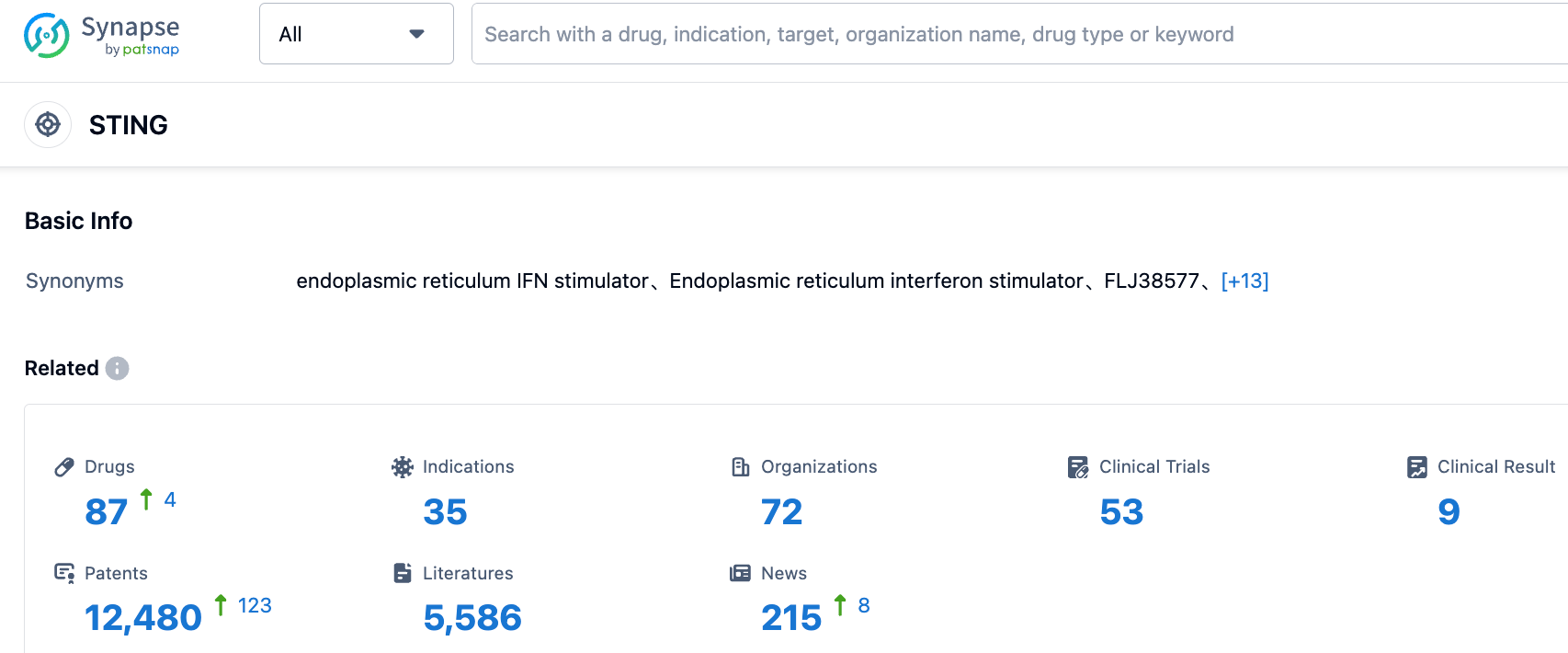Progress in the Research and Development of cGAS-STING Drug Targets
The cGAS-STING signaling pathway is a cytoplasmic DNA sensing pathway that plays a critical role in innate immune responses. Understanding this signaling pathway is extremely important for studying drug targets and treatment strategies. When tumor DNA is sensed by cGAS in the cytoplasm, cGAS catalyses the linkage of nucleotides to form CDNs, which then binds to and activates STING. This process triggers a series of immune responses, including the activation of interferon pathways and mobilization of other important signaling pathways. The activated STING translocates to various locations within the cell, recruiting other key molecules such as TBK1 and IRF3, further activating interferon pathways and other vital immune response pathways. These responses assist the body in resisting the invasion of pathogens such as viruses and tumors. In addition to tumor DNA, STING can also sense cyclic dinucleotide natural ligands produced by bacteria to activate downstream signaling pathways. This reveals the essential role of the cGAS-STING pathway in immune surveillance of the organism.
As of now, 87 drugs targeting STING have been discovered, covering 35 different indications. There are 72 organizations involved in the development of these drugs. Clinical trial data shows that there have been 53 clinical trials related to drugs targeting STING. Furthermore, the development of drugs targeting STING has received widespread attention and protection, with 12,480 patent applications related to drugs targeting STING. To support the progress of research on drugs targeting STING, 5,586 papers have been published. This reflects the scientific activity and knowledge accumulation in this field.
Key Drugs
The first generation of STING agonists are derivatives of CDNs. However, their range of actions is limited due to their rapid clearance in vivo, poor membrane permeability, and their requirement for administration directly into tumors. In order to address these issues, the focus of research and development for a new generation of STING agonists is to achieve systemic administration, increase drug concentration distribution within tumors, and thus improve the drug treatment window.
F-star Therapeutics' SB11285 is a new generation of STING agonists, which can specifically target the hard-to-reach tumor cells and induce the activated immune cells to migrate from the periphery to the tumor lesions. In a phase I clinical trial of treatment for advanced solid tumors with SB11285 either alone or in combination with the PD-L1 antibody Atezolizumab (trade name: Tecentriq), SB11285 demonstrated good tolerability and efficacy.
Merck's MSA-2 is a stable type of STING agonist, which binds to STING in a non-covalent dimeric form, inducing it to assume a closed conformation. Efficacy studies showed that MSA-2, administered intratumorally, subcutaneously or orally, demonstrated good tolerability in a mouse model of colorectal cancer and resulted in complete tumor regression in 80% to 100% of the treated mice. Furthermore, MSA-2 only interacts with STING when it forms a dimer, and the acidic conditions of the tumor microenvironment are more conducive to the dimerization of MSA-2. Therefore, despite MSA-2 being administered systemically, it has potential tumor specificity, showing good safety and tolerability.
Takeda's TAK-676 is a novel synthetic STING agonist optimized to reduce serum degradation and enhance permeability compared to intratumoral STING agonists. It can be utilized through systemic venous administration. Furthermore, the addition of TAK-676 post-radiation therapy can intensify immune response by increasing STING mediated IFN inhibitor release and further stimulating T-cell mediated anti-tumor immune responses. Ongoing studies are aimed at evaluating the safety and preliminary anti-tumor activity of TAK-676 combined with pembrolizumab post-radiation.
Eisai's E7766 is a macrocyclic bridged STING agonist. In a mouse model of hepatic tumors, a single injection of E7766 caused 90% of tumors to regress with no relapses over eight months. Currently, E7766 is undergoing phase I/Ib clinical trials aiming to evaluate its efficacy as a monotherapy in patients with advanced solid tumors and lymphomas.
Scripps Research Institute's SR-717 is a non-nucleotide small molecule STING agonist that can be orally or systemically administered. In an aggressive melanoma animal model, SR-717 significantly inhibited the growth and metastasis of tumors and promoted tumor antigen presentation to the immune system, substantially increasing the levels of peritumoral CD8+ T cells and natural killer (NK) cells.
GSK's GSK37417, a non-CDN small molecule STING agonist with a diamino-benzimidazole scaffold, is currently in phase I dose-escalation study, examining GSK37417 as a monotherapy or in combination with dostarlimab (trade name: Jemperli) for treating refractory/recurrent solid cancer patients. GSK37417 is administered via an intravenous injection, with the study expected to conclude in 2025.
Synlogic's SYNB1891 represents an E.coli strain expressing the dacA protein, which catalyzes the conversion of two ATP molecules into a cyclic AMP dimer, thereby activating STING protein to trigger type I interferon responses and enhance tumor-specific T Cell responses. Roche has partnered with Synlogic to explore the efficacy of its PD-L1 inhibitor atezolizumab in combination with SYNB1891 in treating patients with advanced solid tumors.






